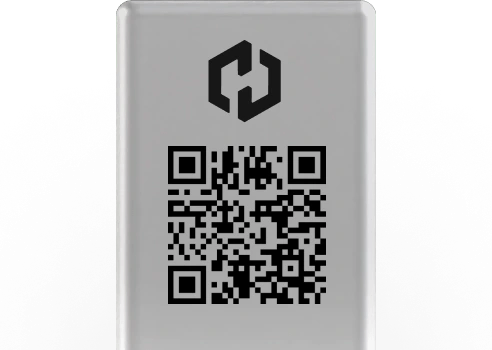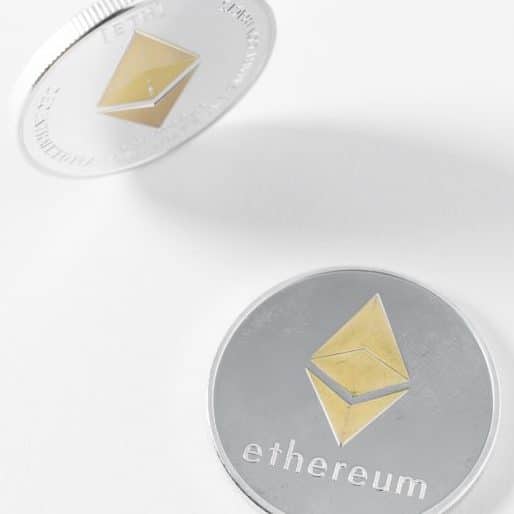Many people have heard of smart contracts.
Initially created on the basis of the blockchain Ethereum.
What do they really do, and how do they work?
Coinhouse gives you a concrete example of the concept and the innovations it embodies.
Ethereum’s most important feature is the ability to use smart contracts.
In this article, we’ll take a closer look at how this technology works, its uses and its limitations, so that it can be understood by as many people as possible.
View the ETH course live.
Understanding smart contracts
Literally, smart contracts are “intelligent” contracts.
They rely on blockchain technology to guarantee their integrity and inviolability.
What makes such a contract smart is its ability to automatically execute predefined instructions.
A better translation of smart contract would therefore be “self-executing contract”.
Here, it is no longer the law that guarantees the validity of transactions, but computer code: if the contractual obligations are fulfilled in the terms established upstream, the code is executed and the transaction is completed without going through an intermediary (for example, the transfer of an asset).
To fully grasp the importance of this innovation, we need to start again with the traditional contract as defined by law.
From a legal point of view, a contract is formed when an offer meets an acceptance, which requires the contracting parties to be brought together.
With smart contracts, computer code alone decides on execution when conditions are met, and the entire digital process is automated.
Smart contracts are “on” blockchain, which means that their operation is based on this technology born of cryptocurrency.
It is this blockchain that makes transactions transparent, unforgeable and irreversible.
Smart contracts with multiple possibilities
We’re not just talking about smart contracts in crypto, but in many other fields too.
These contracts revolutionize contractual processes by (automatically) conditioning performance on compliance with pre-established conditions and obligations.
As a result, in the event of a breach of any of the contract’s obligations, the transaction is cancelled and, where applicable, the sums of money returned, etc., without anyone’s intervention!
The system is completely independent.
Because they simplify and streamline transactions between different players who don’t need to trust or even know each other, smart contracts have every chance of becoming the norm.
Not only because of their advantages (security, reduced risk of error, elimination of friction linked to contractual obligations, etc.), but also because they change the legal landscape: the automation of performance renders obsolete any need to interpret the terms of the contract.
Either obligations are fulfilled, or they are not – period.
In this case, the Code acts as the sole law.
How do you create a smart contract?
The question is how to create a smart contract.
First of all, it’s essential to carefully define the terms of the contract and the contractual obligations incumbent on each party.
In particular, you need to draw up a list of the conditions under which the contract may or may not be performed.
If, for example, the company fails to send an invoice, or the customer fails to make an upstream payment, the smart contract will not complete the transaction.
This data is at the heart of how smart contracts work.
Next, the smart contract must be integrated into the blockchain using a dedicated development framework.
Typically, this starts with an internal blockchain for testing purposes, before publishing the contract on the real blockchain.
The Bitcoin blockchain for simple transactions
Bitcoin, which appeared on the scene in 2009, is not just a cryptocurrency: it’s also a technology – blockchain – that very quickly attracted the interest of businesses because of its promises, in particular the acceleration of transactions and disintermediation.
Indeed, blockchain operates independently of the control of any central authority, its blocks being validated by users.
The effect on the business world was therefore immediate.
However, the Bitcoin blockchain remains limited.
Using Bitcoin, most transactions are simple, involving the sending of bitcoins from one address to another.
It is also possible to use more complex mechanisms, such as multi-signature.
However, these functions remain limited and do not allow the execution of complex algorithms.
Nevertheless, these transactions, however simple, all pass through smart contracts in the blockchain.
However, some smart contracts can be used to carry out far more complex transactions.
How smart contracts work on blockchain
How do smart contracts work?
What are their advantages?
Follow our guide to find out.
Introducing conditions into the performance of an action: the principle of the intelligent contract
A concept formulated in 1996 by developer Nick Szabo, a smart contract is a computer program stored on a blockchain, usually Ethereum.
It can be used to trigger conditional transactions whose execution depends on factors defined in advance via an algorithm.
Smart contracts are executed using ethers you can buy and sell on our Coinhouse platform, just like most of the tokens backing projects created using smart contracts.
These Ethers (ETH) serve as fuel, consumed as the program runs.
Let’s take an example: we want to carry out a crowdfunding project, with the best possible security guarantees, and with a minimum amount below which the project will be cancelled.
Subscribers are asked to send money over a period of one month.
If the project raises more than €1,000, the money is paid to the project managers; otherwise, subscribers are reimbursed in full.
Smart contracts in crypto: the question of investor confidence
The problems usually posed by this type of project then arise: during the month when the project is open for subscription, who keeps the funds?
The project manager?
A centralized platform?
What guarantee do subscribers have of recovering their initial investment if the project fails to reach the defined minimum amount?
How will the funds be monitored, and by whom?
We may be able to draw up contracts, approved by lawyers within a legal framework, but we will never be able to achieve an absolute level of security, as has unfortunately been proven in the past.
Smart contracts establish rules in advance
Using Ethereum, all these questions are answered in a coherent way.
A developer writes a computer program called a smart contract, usually in Solidity language.
Ce programme définit l’intégralité des règles telles qu’elles ont été définies au début du projet : un mois de souscription, à qui les fonds seront envoyés, quel montant minimum sera récolté, etc.
Transparency and immutability: the main advantages of smart contracts
The creator of the smart contract then writes it onto the Ethereum Blockchain, in the form of a transaction, just as if he were sending Ethers (ETH) from one address to another.
Engraved on the Blockchain, the smart contract becomes impossible to modify, and its content can be consulted by anyone, in complete transparency.
Smart contracts in blockchain: trust-generating security
The smart contract has a public Ethereum address, to which Ethers can be sent.
Subscribers then have one month to do so.
Who holds the funds?
The smart contract holds the funds during the subscription period.
To whom will they be delivered?
The rules, as transparently defined, specify the address to which the funds will be delivered if the minimum has been exceeded, otherwise the funds will be automatically returned to each subscriber.
Who can cheat?
Nobody, because it’s impossible to change the rules once the smart contract has been sent to the blockchain.
The potential for transparency and security in this kind of application is therefore particularly interesting.
What’s more, via smart contracts, many activities that previously required intermediaries, trusted third parties, managers, can now be processed automatically and perfectly securely.
What are the limits of smart contracts?
Of course, smart contracts don’t solve all problems, and have a number of limitations detailed below.
First of all, what is the strength of smart contracts, i.e. their immutability, can also be their worst weakness.
If the programmer who created the smart contract has introduced bugs, it is impossible to repair them once the contract is present on the Blockchain.
In fact, a smart contract remains a computer program like any other, subject to the risk of flaws.
If ill-intentioned hackers manage to exploit the flaws in question, they can profit from them at the expense of users.
This is what happened during the hacking of The DAO project which resulted in the theft of over $150 million in ETH tokens.
The perverse effect of this hack was that the transaction history on the Ethereum blockchain had to be rewritten in order to return the stolen sums – quite a feat for a technology based on the principle of the inviolability of recorded information…
This is not the only limitation inherent in smart contracts.
There are two others: volatility and the oracle concept.
Cryptocurrency volatility associated with smart contract
Then, as we’ve seen, the funds are sequestered in the smart contract.
If it’s Ether (ETH), the Ethereum price can vary considerably over the life of the contract.
In the case of insurance, for example, it is not desirable for the premium to change over time.
This problem can be overcome by using stablecoins – crypto-assets whose price does not fluctuate because they are backed by a fiat currency such as the Euro – such as the DAI from MakerDAO.
The oracle concept (and the notion of chance in smart contracts)
Finally, while it’s possible to verify what’s in a smart contract or an Ethereum address fairly easily in terms of transactions, it’s much more difficult to verify information or an event that has taken place outside the Blockchain: has there been an accident involving such and such a vehicle?
Who won this or that election?
In such cases, you’ll need to use an “oracle” to confirm that the condition triggering payment of the contract has indeed been fulfilled.
However, this oracle, being located outside the Blockchain, once again poses a problem that existed before the creation of the smart contract: can this intermediary be fully trusted, and by what means?
Trusted third parties such as notaries or well-established auditing firms would undoubtedly be best placed to fulfil this role.
Decentralized oracle projects are also being developed, providing information that can be easily verified by different parties and read directly on the Blockchain.
Le leader sur ce segment est le projet Chainlink (LINK).
Smart contracts have the potential to revolutionize countless economic activities, by decentralizing trust, formalizing the logic of executing a complex payment via a computer language, and sequestering funds securely for the duration of the contract.
It’s hardly surprising that many companies, and even government players, are taking a keen interest in them, even if it’s necessary to remain aware of the framework in which they can best be used.
Smart contract in crypto: what are the use cases?
For businesses and individuals alike, smart contracts have many possible uses.
Discover some examples of possible use cases for smart contracts in blockchain:
- Sending funds in both fiat and cryptocurrency.
For example, when signing a preliminary sales agreement or a deed of sale in a real estate transaction, the payment of funds (deposit and/or final amount) is made automatically, from the buyer to the seller, without any intermediary.
The same applies to delivery services: on receipt, the order amount is automatically transferred to the crypto chosen upstream.
- Validation of a contract clause.
For example, with insurance contracts associated with smart contracts, we can imagine compensation procedures that take into account the actual conditions encountered at the time of the claim – road traffic or weather conditions for a car accident, etc. – and then validate the contractual terms.
- Consolidation of authentication systems: using smart contracts in the blockchain to prove the identity of users, for example by linking this identity to an on-chain address or attesting to data in an off-chain server.
A useful additional layer of security for institutions and companies operating in sensitive fields.
The information contained in smart contracts can be diverse and varied, enabling all kinds of transactions to be validated. Smart contracts therefore have a bright future ahead of them.























